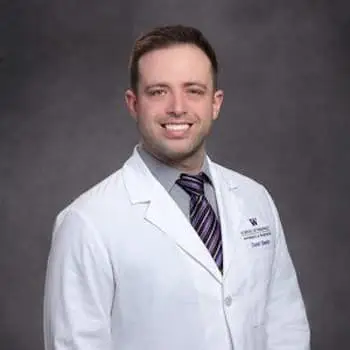PCP is a dangerous substance with a high abuse potential. Addiction treatment can help ease withdrawal symptoms and set you on the path to recovery.
Phencyclidine, or PCP for short, is a drug that was created in the early 20th century for use in surgery. PCP is no longer manufactured in the United States and is not used for any medical purposes. It is has a Schedule II classification by the Drug Enforcement Agency (DEA), which means it has a high potential for abuse and addiction.
When someone suffers from addiction to PCP, they may experience symptoms of PCP withdrawal during PCP detox. Detox is the process of the drug leaving the body. Withdrawal is the set of symptoms that happen during and after detox. Withdrawal symptoms for PCP can be life-threatening.
When someone enters an addiction treatment program, they may need detox treatment. Detox is medically supervised and manages symptoms, making the entire process less uncomfortable and less dangerous. Withdrawal symptoms are short-lived and happen for about a week. However, they are so uncomfortable that there is a high risk of relapse during this time. Therefore, appropriate withdrawal treatment helps make the entire addiction treatment program more successful.
Treatment Can Be Life Changing. Reach out today.

What Causes PCP Withdrawal?
Withdrawal symptoms can surface whenever someone stops using a drug that their body has become dependent upon.
If someone uses PCP for a long time or in large doses, their brain chemistry adjusts to the presence of the drug.
PCP interacts with brain cells and alters the amounts of chemical messengers like serotonin and dopamine. PCP increases or decreases the amount of these messengers outside natural levels. To compensate, brain cells work to re-balance levels to normal.
When PCP is removed from the system, brain cells continue producing too much or too little of these messengers. This imbalance is what results in symptoms like tremor, agitation and seizures.
PCP Withdrawal Symptoms
PCP stays in the body much longer than most drugs. While the desired effects last 1–3 hours, the body takes about 15 days to clear the drug after a single use and more than a month for people who chronically use the drug.
Due to this extended timeline, it may be difficult to distinguish the effects of withdrawal symptoms from the lingering side effects of PCP.
Some PCP withdrawal symptoms include:
- Anxiety or worry
- Confusion
- Cravings
- Depression
- Hallucinations (seeing or hearing things that are not there)
- High body temperature (fever)
- Muscle twitching
- Seizures
- Weight loss
How Can a Doctor Diagnose PCP Withdrawal?
A doctor will diagnose PCP withdrawal by looking at patient health history, symptoms and drug screening results.
Someone experiencing withdrawal should be honest about their drug use to help the doctor make a correct diagnosis. If drug use is not discussed, then the doctor may start looking for an incorrect diagnosis to match the withdrawal symptoms.
Drug screens are also useful for making a diagnosis of PCP withdrawal. Blood tests can be used, but they are expensive and not every doctor has access to this test. Urine screens are favored because they are fast, inexpensive and easy to administer.
Diagnosing PCP Withdrawal in Newborns
When a mother takes PCP during pregnancy, the drug can pass to the baby. A baby born to a mother addicted to PCP may experience the following symptoms:
- Diarrhea
- Hypertonicity, or abnormal tightening of muscles
- Jitteriness
- Loss of consciousness
- Vomiting
- Sudden outbursts
For expectant mothers, a PCP addiction is likely to cause withdrawal symptoms in a newborn. Treating the addiction before the baby is born can spare it from uncomfortable or life-threatening withdrawal symptoms after birth.
PCP Withdrawal Treatment
To start treatment, a person has to first recognize they have an addiction. They can then seek help through their doctor or through other resources to connect with an addiction professional.
Withdrawal will often require admission to a medical or inpatient treatment facility that can safely treat patients as they clear PCP from the system.
How Long Does It Take to Detox from PCP?
Detox from PCP can take a few weeks because of how long the drug stays in the body.
The half-life of PCP is three days, meaning it takes three days for half of the drug to leave the body. During the following three days after that, only half of that amount is metabolized, and so on.
PCP will not fully leave the body for about 15 days.
Finding a Detox Center
The Substance Abuse and Mental Health Services Administration (SAMHSA) has a tool to locate addiction treatment facilities here.
There are addiction treatment facilities in each state, but not all of them treat every condition. Before entering treatment, a person should call the treatment center and make sure that their specific drug or alcohol addiction is treated by that facility.
Other factors to consider when choosing a detox center:
- Location: Close to Home or Far Away? Is it better to attend treatment close to home or far away? Some people prefer to be closer to family members or friends for social support. For others, family and friends can interfere with treatment and invade privacy.
- Cost of Detox. Costs will vary from one center to another. Most insurance plans will cover rehab treatment, but that would need to be discussed with the insurance plan directly.
- Effectiveness of Detox Program. One of the best ways to discover the effectiveness of a treatment program is to speak to program alumni. See if the facility will put you in contact with people who have been through the program. If not, online reviews may be a good source of information.
- Staff-to-patient Ratio. In general, more staff for each patient will result in better outcomes. Someone seeking rehab should ask this question while researching facilities.











